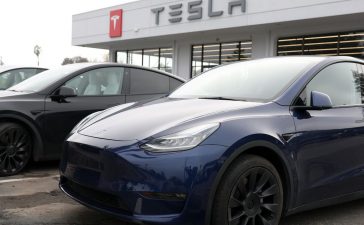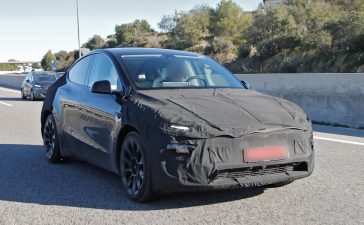During the Covid crisis, Apple learned that putting the majority of its production in one nation weakened its supply chain. Since then, it has been working to fix that problem by encouraging partners to open up in new nations.
That’s a sensible response to supply-chain weakness, and while the Apple in India story is now well-known, the company is also putting resources into Vietnam, building out its iPad and Mac production lines in the nation.
Apple isn’t alone. Local reports tell us Nvidia CEO Jensen Huang also intends to open for business in Vietnam. And the presence of both Apple and Nvidia in Vietnam will likely encourage other consumer electronics firms to get more involved.
Apple’s business responds to shocks
While reporting on Apple suppliers almost always focuses on China, the company has partners worldwide, supplying components for final assembly. Traditionally, Apple’s supply chain has involved a combination of in-house R&D with manufacturing outsourced to trusted partners.
The top 200 companies on Apple’s published Supplier List together account for around 98% of its procurement. Apple is hard to work for, demanding, and drives tight deals, but has the mass production scale to make the effort worthwhile.
Over the years I’ve learned that relationships between the company and its key suppliers tend to be big on collaboration and make extensive use of Apple-developed manufacturing processes, with limited inventory and highly optimized ordering and production. Apple’s supply chain globalized early — in the 2000s under then-COO Tim Cook.
Today, as the production environment has become more complex, it’s of no surprise that Apple is developing a new approach.
This could perhaps be seen as a more federated, more complex, yet still firmly internationalized model in which all the moving parts are orchestrated to prevent inventory build-up. (Cook at one point said, “Inventory is fundamentally evil,” adding, “You want to manage it like you’re in the dairy business.”)
Working toward business resilience
In Vietnam, Apple is working with a familiar Chinese partner, BYD. That relationship isn’t new, but what is new is that Apple isn’t just putting manufacturing in Vietnam, but also basing important parts of its iPad design and development resources in the nation. It means Apple and BYD will work on new products and new production processes to make those products.
In other words, Vietnam won’t just be making iPads, it will also be designing the manufacturing process used to make them, just as Apple has moved some iPhone manufacturing design to India.
While Apple watchers may be interested in all these minutiae, what matters most is that they prove Apple’s changing approach to business resilience. The company’s operations teams don’t want to be caught out by any future disaster, and the move to make a more resilient chain is a hedge against any form of that.
Putting eggs in many baskets
It’s important to appreciate that despite political tension between the US and China, China remains a huge market for Apple. A recent Morgan Stanley client note tells us that 74% of Chinese iPhone owners may purchase a Vision Pro mixed-reality headset within 12 months of its introduction, and 90% will buy one if the price falls. In the US, just 33% of iPhone users will buy one.
However, building redundancy into manufacturing is expensive and leaves companies exposed to additional costs.
That’s why Apple seems focused on putting production on a per-product basis into multiple nations. So, iPad and Mac production will move to Vietnam, iPhone to India, and so on. These new factories don’t completely replace the company’s existing Chinese supply lines, but they do supplement them, giving the company far more resilience against future shock.
Unleashing the opportunity in change
Apple is using these necessary changes to unlock fresh opportunity.
The company is driving hard toward achieving carbon-neutral status across its supply chain. Reaching this goal will require big investments in renewable energy, as well as in highly efficient production processes and industrial equipment.
Setting up a more resilient supply chain also means the company and its partners must invest in next-generation machinery as new facilities come online. And expanding into new markets as Apple’s traditional territories become saturated or slow down also requires engagement in new nations.
So Apple is solving multiple challenges at once. It must invest in production outside China to help protect against future shock. It wants to invest in more climate-friendly production processes, and it needs to generate new business in new territories.
By expanding its manufacturing locations, the company is achieving all these things — getting into new markets, becoming more resilient, and using the opportunity to invest in new manufacturing processes.
After all, even without the supply-chain lessons of Covid-19, many manufacturers need to invest in new manufacturing facilities, so why not turn this investment need into a new opportunity to build business fit for an uncertain future?
That perhaps is the most important takeaway for any business seeking to make its own supply chain more resilient to cope with future shock. Not only does doing so give you a chance to take stock of operations today, but you also get to use the investments you need to make anyway to help build your business in new markets while modernizing your approach to production to meet the needs of climate regulation.
Up next
This, in principle, is what Apple appears to be doing. That’s going to benefit the company’s business in new manufacturing host nations and hints that its much-criticized but still brave carbon-neutral branding is going to start appearing on many more products from the company in the next five years.
The lesson for any business is the same as it ever was: When you must make big changes, why not seek the opportunity within them? Just like Apple, you may end up with something better than before.
Please follow me on Mastodon, or join me in the AppleHolic’s bar & grill and Apple Discussions groups on MeWe.
Copyright © 2023 IDG Communications, Inc.












